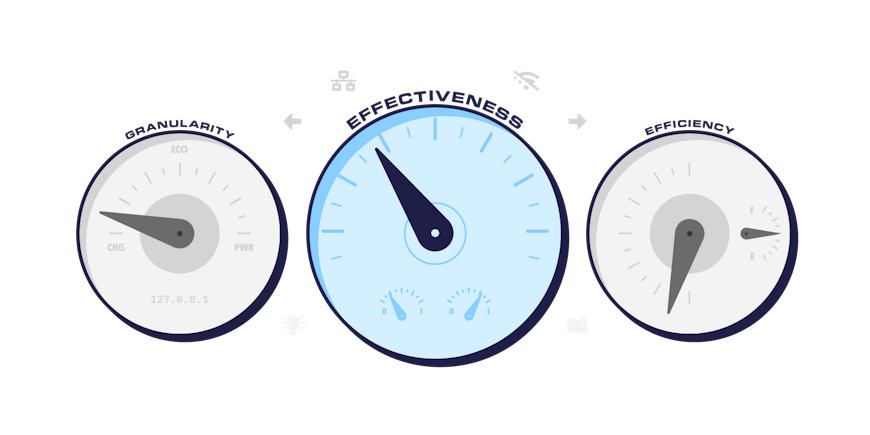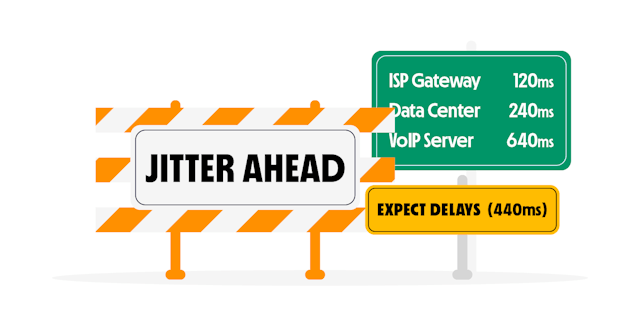Troubleshooting Tips
Rethinking Internet Health Beyond Speed Tests

Speed tests. We all know what they are. But do you really understand what the results of a speed test tell us about our internet? The higher the number, the better our internet connection, right? Kinda, but that number doesn't tell us the full story, just a very small part. This is why using a speed test to find out how well your internet is doing can be very misleading.
A speed test measures the amount of data that can be transferred from a remote location to your device over the internet at a given time. This number is known as bandwidth. A more appropriate name for speed test would actually be bandwidth test.
Here's a common scenario: You do a speed test in the early morning and get a 300 Mbps download speed. That means that at that specific moment in time you could transfer about 38 megabytes (8 megabits = 1 megabyte) per second over the internet. Not bad!
Later that evening you do another speed test and get 120 Mbps. What gives? You're paying for 500 Mbps so your ISP must be throttling your speeds. Not exactly. Remember, a speed test measures bandwidth, and more specifically available bandwidth at a specific moment in time (when you push the “go” button). The first speed test was done when nobody else was home. You had all of the bandwidth to yourself. During the second speed test, somebody was watching Game of Thrones in the other room. Your binge-watching friend was using up a lot of the available bandwidth.
What does that mean for you? Not a whole lot really. Downloading large files might have taken a bit longer, but you most likely wouldn't have even noticed a difference. You would have continued your World of Tanks conquest without skipping a beat.
Network traffic is a bit like freeway traffic
Let's use an analogy to make this a bit clearer.
We're cruising down a six-lane freeway in the early morning. Music is blasting. Nobody else is on the road. There's nothing slowing you down. This is what your network looked like during the first speed test. You were the only one on the network and most of the lanes were open.
Later that evening, you're on that same freeway. Music is blasting. There's a fair amount of traffic, but still, nothing is slowing you down. This is what your network looked like during the second speed test. Even though somebody else was on the network, it wasn't slowing you down. So why did you get a lower number?

Again, a speed test measures bandwidth, not speed. That 300 Mbps refers more to the maximum bandwidth your connection can handle. Think of this as the number of cars that a six-lane freeway can support or how wide the road is. A speed test is looking at how much room is left on the freeway at that given time. If nobody is on the freeway with you, the higher the number. When it gets busier in the evening, there's not nearly as much room, but you're still able to go the speed limit.
What the speed test is actually doing is shoving as many cars on that freeway as it possibly can. The more cars that are already on the freeway, the fewer it can add. This is how you get the lower number.
Furthermore, the speed test is originating from a server that is relatively close to your physical location. That doesn't really help if you want to see how "fast" your connection is to something on the other side of the world. This would be like using Google Maps to see how long it will take to drive to work on Interstate 15 when you actually use Interstate 84. Not at all that helpful.
Are you starting to see how this can be misleading? Even though the speed test reports that lower number, even though there are more cars on the freeway than earlier that day, you're still able to go the same speed. Your computer will still send data as fast as it did earlier that morning. You likely won't even notice a difference. Not to mention it's taking a completely different route than you would be.
There's a better way to measure internet health
Speed tests definitely have their place. But when looking at overall internet health, latency and packet loss are really the two metrics you want to evaluate.
Latency is defined as the amount of time required for a data packet to go from one location to another and back, usually measured in milliseconds. Think of this as how fast you can drive to your destination and back.
Jitter is the variance in latency — how much the latency bounces up and down. Stop-and-go traffic is a great way to think about this. Slowing down for construction zones, potholes, cracks, the chicken crossing the road, etc.
Packet loss is measured as a percentage. It's the percentage of data packets that get sent out and never make it back. You got on the freeway but you never came back home. You got lost, a flat tire, pulled over for speeding, etc.
So what is good latency, jitter and packet loss? In all reality, it depends on the application and the type of connection you have. A fiber connection is going to be much faster than satellite internet. In general though, we've found that a good target latency is under 200ms. Anything above and your internet experience starts to degrade real quick.
Here are our recommendations based on the application:
| Application | Latency | Packet Loss | Jitter |
|---|---|---|---|
| Gaming | 100ms | 0.5% | 30ms |
| Video Conferencing | 150ms | 0.5% | 40ms |
| Voiceover IP Telecommunications | 150ms | 0.5% | 40ms |
| Remote Desktop Connections | 180ms | 0.5% | 20ms |
| Web Browsing | 550ms | 0.5% | 60ms |
Keep in mind, some applications can be quite the bandwidth hog without needing a low latency. Streaming requires a lot more bandwidth than VoIP applications, but VoIP needs a much better latency score than streaming.
Track your latency and packet loss!
We’ve been looking at latency and packet loss since dial-up was hot stuff. PingPlotter graphs your latency and packet loss statistics over time so that you can capture your issues while they happen. It will help you identify which device in the route is giving you grief — whether it be that pesky Wifi router or something in your ISP’s network.
So the next time you go to do a speed test, just remember, it’s only telling you a tiny part of the story! To hear more of the story, use PingPlotter. Start your free trial now!
Do you support remote workers?
When remote workforces have connection trouble PingPlotter Cloud helps you find the problem and get everyone back online fast.

